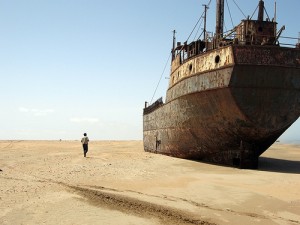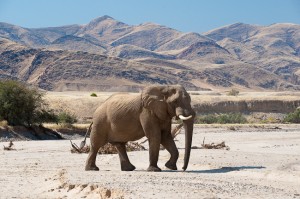
A 900-mile coastline runs perpendicular to the border of Angola and Namibia. The cold water carried up from the antarctic by the Benguela Current meets the warm, dry air of the Namib Desert and the resulting depression forms a cold, dense fog that extends out into the sea. The currents and wind combine to produce a force pushing inexorably towards shore. These conditions led mariners to christen this seemingly desolate and inhospitable stretch of sand the Skeleton Coast.

The Skeleton Coast National Park, arguably the least visited national park in the world, is part of the Iona – Skeleton Coast Transfrontier Conservation Area. Despite its barren image, the Skeleton Coast is rich in wildlife. Elephants, Giraffes, and Lions roam the interior, while the coast itself boast an impressive colony of Cape Fur seal. The nutrient rich waters support a productive fishery. Although whaling has been illegal for several decades, massive skeletal remains remind visitors of a now depleted heritage. The Skeleton Coast hosts Africa’s largest population of Black Rhino. Among the parks many endemic species is the Desert Plated Lizard (Gerrhosaurus skoogi).
Far from the beaten path and inhospitable to all but the hardiest people, the Skeleton Coast is not facing imminent threats. Big game hunters are attracted to some of the larger wildlife species, but their scarcity is their best protection. Many populations endangered elsewhere in Africa have maintained their numbers on the Skeleton Coast. Still, the future is never certain and it is as important to protect areas not under threat as those that are.
